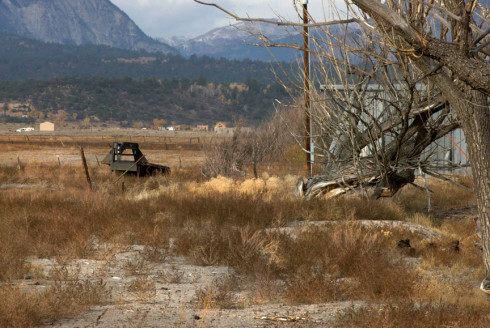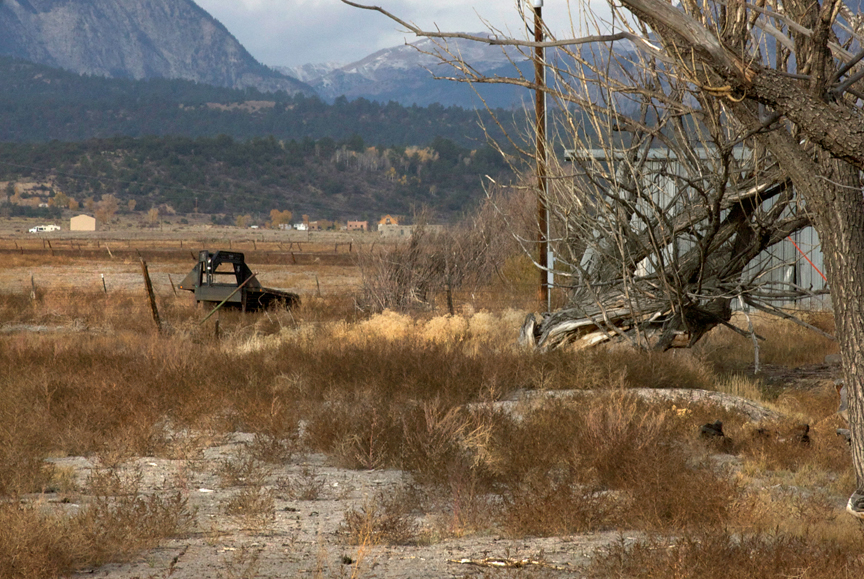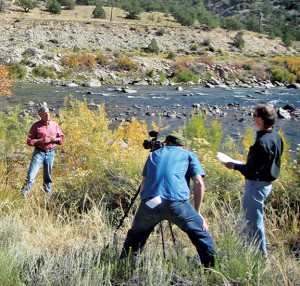By Ron Sering
Rights to irrigate the area known today as Hill Ranch predate Chaffee County by more than a decade. Decreed in 1868, the rights permitted diversion of water for agriculture and ranching. And so it remained for more than a century, even after sale of the rights by the Hill family to Western Water Rights Limited Liability Partnership in 1986.
That all changed with the subsequent sale of the rights to the Pueblo West Metropolitan District (PWMD) in 2008. The PWMD, home to nearly 30,000 thirsty people, needed the rights to fuel a growth rate that remains among the fastest in the state. The rights are significant, totaling nearly 1,900 acre feet of water. An acre foot totals nearly 326,000 gallons. Under the decree, the rights would convert from agricultural to municipal. Included in the terms was the cessation of irrigation activities. The land would be dried up and restored to its pre-irrigation state.

The irrigation made growth possible for more water-loving vegetation, including aspen and cottonwood trees, and Russian thistle, a non-native species also known as tumbleweed. Under the rights transfer, the intrusive weeds must be removed and native grasses restored.
PWMD contracted with Denver-based WRC Engineering to perform the dry-up. The plan was to cease irrigation to dry up the land, defoliate the intrusive species and minimize windblown weeds and dust, followed by the introduction of a prescribed seed mixture from the Natural Resources Conservation Service (NRCS).
The NRCS typically assists landowners in preserving or restoring land affected by changes in climate or use. “We provided a prescription of certain seeds and how to plant them,” said Bill Gardiner, NRCS District Conservationist for the Salida District.
The non-native shrubs and grasses were removed with an herbicide, and the seed mixture was planted. “But there was a problem with germination,” Gardiner said. The seed did not sprout.
What seemed straightforward quickly became complex.
Further investigation by NRCS soil conservation technician Matt Coen revealed that the irrigation had transformed the arid region into irrigation-induced wetlands. “The irrigation has resulted in a human-created peat layer,” Gardiner said.
Peat is an accumulation of partially decomposed vegetation, formed when wet conditions prevent the penetration of oxygen to the dead vegetation and inhibit decomposition. This is a poor growth medium for the grasses. “For grass seed to germinate,” Gardiner added, “it needs firm seed-to-ground contact.” The reseeding effort has been further hampered by a relatively low mineral content in the soil. “We dug a test hole,” Gardiner said, “and beneath the peat, there’s wet sand.”
The NRCS will continue the investigation. “We’re trying to determine the depth of the peat,” Gardiner said. “In some places it could be several inches.” Gardiner pointed out that as long as the peat barrier remains, “it’s going to be very difficult to get seed to take.”
In hopes of encouraging the new seed to sprout, limited irrigation was restored to the area. This, in turn, stimulated renewed weed growth, not all of which was halted through herbicides. As a result, some residents raised concerns about a potential tumbleweed nuisance.
“But I would just love to only have a tumbleweed problem,” said Nathrop resident Bob Orris.
Orris lives on 39 acres near the Hill Ranch area in a house he built himself in 1995. He was proud of the stands of mature cottonwood and aspen trees on his property, a product of the increased water supply. “They turned off the ditch about three years ago,” Orris said.
The restoration of limited irrigation in the summer did little to help the trees. “The trees are just dying. I have to cut them down just to protect my house.”
Cottonwoods typically thrive along streams and ditches, though they can tolerate dry conditions if cultivated in them from the start. The cessation of irrigation activities will make it very difficult for the trees to survive.
“Plant seeds only sprout when the conditions are right,” said author and former field ecologist Susan J. Tweit, “and that includes sensing the chemical signatures of the other species they need to survive, including shrubs, wildflowers, soil microbes, etc. The high desert plant communities here are not lawns or hayfields – they’re diverse communities of many different species, including shrubs, wildflowers, grasses, soil microbes, insects and more.”
The NRCS has recommended adding more species of grass to the seed mixture, as well as the possible addition of native shrubs. Research is planned to determine the extent of the peat layer and possible actions to remediate it. PWMD continues to comply with the requirements of the decree, including construction of fencing to contain nuisance blowing of weeds.
Some areas, particularly those where irrigation has not been used for many years, have returned to a native state and need no further attention. For others, the restoration could be a long-term effort. Said Gardiner, “it takes about five years to determine if it’s working.”
Ron Sering lives in the Howard Metropolitan area and likes to soak his feet in the irrigation ditch that runs by his office.


